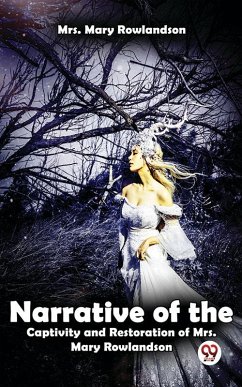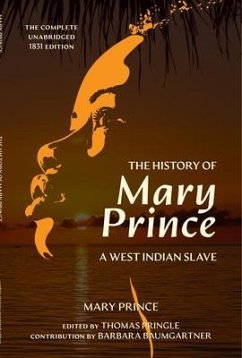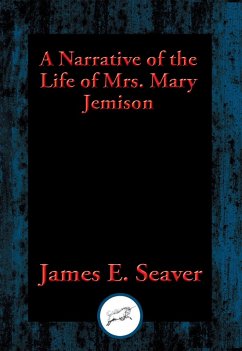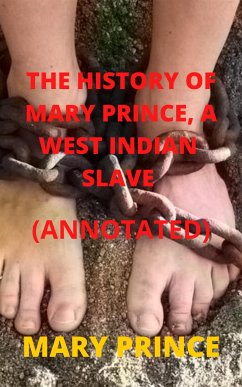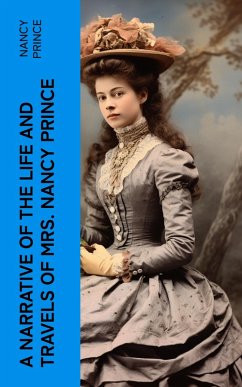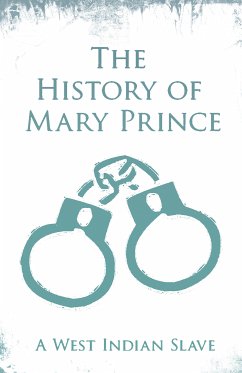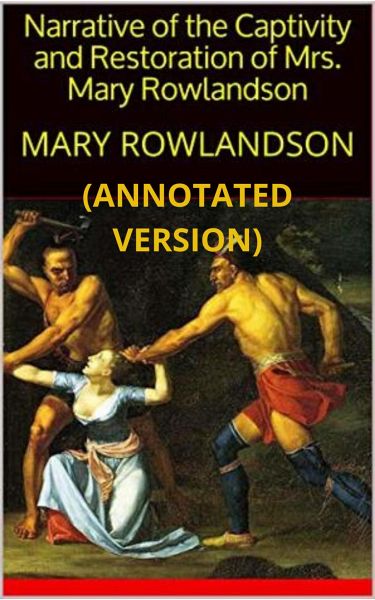
Narrative of The Captivity and Restoration of Mrs. Mary Rowlandson (Annotated) (eBook, ePUB)

PAYBACK Punkte
0 °P sammeln!
This is the Annotated Version of the Original Book. We had tried to annotate this book by adding a 55% to 65% Summary at the end of this book in red fonts. Mary (White) Rowlandson was a colonial American woman who was captured during an attack by Native Americans during King Philip's War and held ransom for 11 weeks and 5 days. After being released, she wrote A Narrative of the Captivity and Restoration of Mrs. Mary Rowlandson, also known as The Sovereignty and Goodness of God. It is a work in the literary genre of captivity narratives. It is considered to be one of America's first bestsellers...
This is the Annotated Version of the Original Book. We had tried to annotate this book by adding a 55% to 65% Summary at the end of this book in red fonts. Mary (White) Rowlandson was a colonial American woman who was captured during an attack by Native Americans during King Philip's War and held ransom for 11 weeks and 5 days. After being released, she wrote A Narrative of the Captivity and Restoration of Mrs. Mary Rowlandson, also known as The Sovereignty and Goodness of God. It is a work in the literary genre of captivity narratives. It is considered to be one of America's first bestsellers, four editions appearing in 1682 when it was first published. They took many of the survivors captive, including Mary Rowlandson and her three children. Mary and her youngest child were among the injured, while others of her family, including her brother-in-law, were killed. Being injured, the journey was difficult for Rowlandson and her daughter. They reached an Indian settlement called Wenimesset, where Rowlandson met another captive named Robert Pepper who tried to help the new captives. They buried Rowlandson's dead daughter, and she was allowed to visit her oldest daughter, Mary, who was also being held in Wenimesset. After attacking another town, the Native Americans decided to head north, and Rowlandson was again separated from her family and her new friends. They came to the Baquaug River and crossed it with the English soldiers close behind. However, the English were not able to cross, and Rowlandson and the Indians continued northwest. Rowlandson and the Native Americans soon crossed the river and met King Philip. Rowlandson wanted to go to Albany in hopes of being sold for gunpowder, but the Indians took her northward and crossed the river again. Rowlandson started hoping that she might be returned home, but the Indians turned south, continuing along the Connecticut River instead of heading east towards civilization. Rowlandson and her group finally started to move east. They crossed the Baquaug River again where they met messengers telling Rowlandson she had to go to Wachusett where the Indians would discuss the possibility of her returning to freedom. She was disheartened by the sight of a colonist injured in a previous Indian attack. She reached Wachusett and spoke to King Philip, who guaranteed her freedom in two weeks. The council asked how much her husband would pay for her ransom and they sent a letter to Boston offering her freedom for twenty pounds. The Indians could also be kind to her and treat her well, and the next day they will starve her with no clarification. Throughout the entire expertise, Rowlandson keeps her religion and returns everything that happens into a blessing or a doing of God. Mary Rowlandson wrote her story with the intention of getting other's browse it, as well as those around her. Given this her narrative is often understood in terms of however she would need to represent herself and her captivity to those readers, so not whole understood as a very correct account. Rowlandson was a revered girl inside Puritan society and in and of itself would be expected to represent all that was customary of fine Christian girls.
Dieser Download kann aus rechtlichen Gründen nur mit Rechnungsadresse in A, B, BG, CY, CZ, D, DK, EW, E, FIN, F, GR, HR, H, IRL, I, LT, L, LR, M, NL, PL, P, R, S, SLO, SK ausgeliefert werden.





